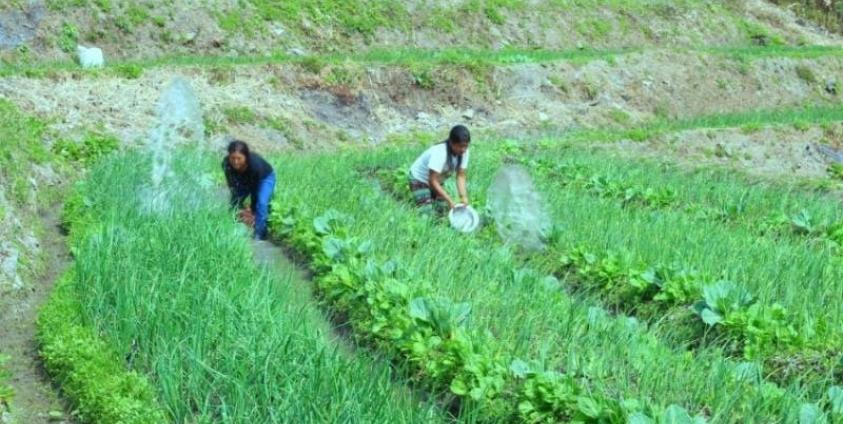Farmer Swae Du Hmone remembers how until a few years ago his family would have to venture into the mountains around Htalan Yong Village each spring to clear several acres of forest before they could plant their rainy season crops.
“As we did not have our own land, we needed to cut down a large number of trees for agriculture for many years,” the 56-year-old ethnic Chin farmer said, recalling how his family of eight relied on shifting farming, a traditional livelihood practice here in the mountains of western Myanmar’s Chin State.
Swae Du Hmone said when they farmed their land after the heavy work of clearing the forest, the resulting harvest was often meagre. “We did not get enough family income, although we were working on 3, 4 acres of land,” he said.
Since 2009, he has worked with the Chokhlei Organisation for Rural and Agricultural Development (CORAD), a community NGO set up by agriculture officials in Chin State, and he built a 2-acre terrace farm plot in Falam Township on which he grows rice and vegetables such as mustard leaf and beans.
The change to sedentary farming, he said, has markedly improved his family incomes and eased their work load. “We can grow plants on our farm all-year round and we can afford to send our children to school as we are receiving additional income,” Swae Du Hmone said, adding that the sedentary farm allowed the family time to also raise chickens and pigs.
He is not the only one who had made the change; all along the road from Falam and the Chin State capital Hakha farmers can be seen growing vegetables, such as onions, on terrace farms.
TERRACE CULTIVATION
Kee Tu, project manager of CORAD, said the organisation had helped build 650 acres of terrace farm plots between 2008 and 2014, adding that in Htalan Yong Village some 80 acres were created.
Kee Tu said that despite such developments some 85 percent of the Chin farmers continue to rely on shifting cultivation, even though the practice provides low yields, is vulnerable to erratic rainfall, and puts pressure on the state’s forests and environment.
Chin is Myanmar’s poorest state and its communities suffer from isolation, a lack of arable land and the effects of climate change. A 2013 World Food Programme assessment said harvests from shifting cultivation were falling and food insecurity is “a cyclical and chronic problem, which affects all townships of the State.”
Chin is also prone to landslides, which caused massive destruction to villages, farms and roads in 2015. The disaster displaced tens of thousands of people, some of whom have had to permanently move to safer areas.
The loss of forest due to shifting cultivation is contributing to mountainside erosion and landslides, according to Kee Tu. “The (2015) landslides mainly occurred in deforested areas,” he said.
FOREST LOSS
Farmers who practice shifting cultivation usually remove an area of forest to farm for one or two seasons, before leaving the land fallow so vegetation can return. They then move on to clear other areas.
The forest clearing occurs on a large scale; villagers in Htalan Yong said they are allowed to cut down some 200 acres of forest and vegetation.
Salai Daniel, deputy director at the Chin State Agricultural Department, estimated some 100,000 acres are cleared annually, representing about 5 percent of the state’s total area.
“If more forest continues to be cleared there will be a great loss of natural resources in the future,” he said, adding that it is imperative that farmers switch to terrace farming soonest.
“We are setting up 2 to 3 acres of model terraces in every township of Chin State and we will gradually extend this project,” he said.
Talaung Zaman, project manager of CORAD in Falam, said, “Forest areas in Falam Township have gradually disappeared the last 20 years. If the shifting farming system is not reduced and prevented, the impacts will be huge in the next 30 to 40 years.”
But Hone Kee, a Hakha District Agriculture Department officer, said changing cultivation methods would be costly, as it requires some $1,500 to create a 1-acre terrace plot, while changing farmers’ attitudes will also be difficult.
“Most of the farmers believe that shifting cultivation makes land more fertile than permanent cultivation. So, they dare not change the cultivation system. This is the main challenge,” Hone Kee said.







